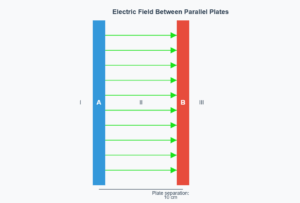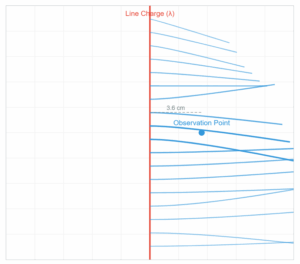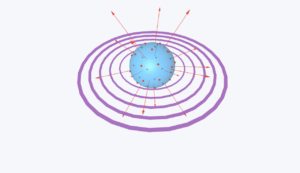Electric Dipole in 3D Visualization
Interactive 3D Electric Field Simulator for Physics Education
Configuration
Charge 1
Charge 2
3D Visualization Canvas
Loading 3D Electric Dipole Visualization...
How to Interact with the 3D Visualization
- Rotate: Left-click and drag to rotate the electric dipole in 3D space
- Zoom: Scroll or pinch to zoom in/out of the electric field
- Pan: Right-click and drag to pan the view
This electric dipole in 3D visualization helps students and researchers intuitively grasp complex electromagnetic concepts by transforming abstract equations into interactive 3D models. The tool dynamically illustrates field lines, charge interactions, and vector directions, making it invaluable for physics education. By simulating configurations like electric dipoles, quadrupoles, and custom charge arrangements, users gain deeper insights into field strength, directionality, and spatial distribution.
Understanding Electric Dipole in 3D Space
An electric dipole in 3D consists of two equal and opposite charges separated by a distance. This fundamental concept in electrostatics plays a crucial role in understanding molecular behavior, antenna design, and electromagnetic theory. Our interactive 3D visualization allows you to explore electric dipole fields in ways that traditional 2D diagrams cannot achieve.
What is an Electric Dipole?
An electric dipole is formed when two point charges of equal magnitude but opposite sign (+q and -q) are separated by a distance. The dipole moment (p) is a vector quantity defined as p = q × d, where d is the displacement vector from the negative to the positive charge. In 3D space, electric dipoles create complex field patterns that vary with position and orientation.
Electric Field Lines in 3D
The electric field lines in 3D emanating from a dipole follow curved paths from the positive charge to the negative charge. Unlike monopole fields that radiate uniformly, dipole fields exhibit directionality and decay more rapidly with distance (proportional to 1/r³ in the far field). This 3D visualization demonstrates how field lines curve and concentrate between charges, providing insights into field strength distribution.
Applications of Electric Dipole Models
Understanding electric dipoles in 3D is essential for:
- Molecular Physics: Many molecules possess permanent or induced dipole moments
- Antenna Theory: Dipole antennas are fundamental in radio communication
- Dielectric Materials: Material polarization involves alignment of molecular dipoles
- Electrostatic Interactions: Dipole-dipole interactions govern many chemical and physical processes
Features of This 3D Electric Dipole Simulator
Our interactive tool allows you to:
- Visualize electric dipole configurations in full 3D
- Adjust charge positions in X, Y, and Z coordinates
- Simulate quadrupole and custom multi-charge systems
- Control field line density for detailed or simplified views
- Rotate, zoom, and explore from any angle
Educational Value
This 3D electric dipole visualization tool transforms abstract physics concepts into tangible, interactive experiences. Students can see how field strength varies with distance, understand symmetry properties, and develop intuition about vector fields. The ability to manipulate charges in 3D space provides a deeper understanding than static textbook diagrams.



